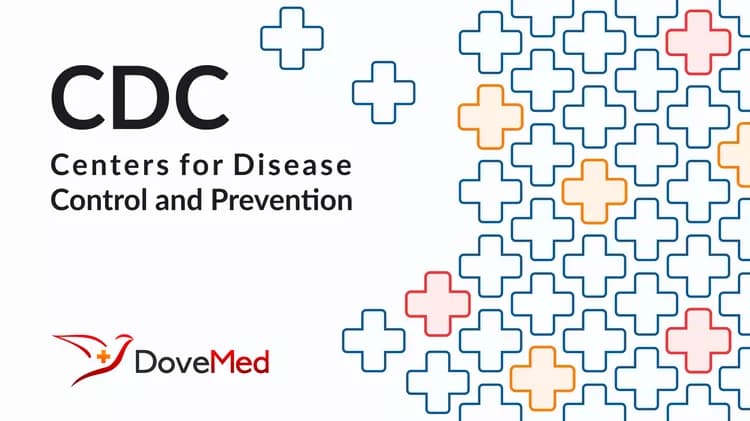
Latest Cancer Incidence Report Shows Prostate Leading Cancer Among Men, Breast Cancer Leads for Women
Latest Cancer Incidence Report Shows Prostate Leading Cancer Among Men, Breast Cancer Leads for Women
The most comprehensive federal report available on state-specific cancer incidence rates for the first time includes information on Asians/Pacific Islanders as well as a new section on childhood cancers. U.S. Cancer Statistics: 2000 Incidence – released today by the Department of Health and Human Services (HHS) – also shows prostate cancer is the leading cancer overall in men in the United States and breast cancer is the most common form of cancer in U.S. women.
The latest report marks the second time the Centers for Disease Control and Prevention (CDC) and the National Cancer Institute (NCI), in collaboration with the North American Association of Central Cancer Registries, have combined data to produce official federal statistics on cancer incidence.
The report includes data from 41 states, six metropolitan areas, and the District of Columbia, covering 84 percent of the U.S. population – up from the coverage rate of 78 percent for the 1999 report issued last year.
“The increase in the coverage rate can be attributed to more statewide registries meeting data quality criteria for inclusion in this report. Our goal is to continue to provide detailed information from population-based central cancer registries to better conduct research and guide effective cancer prevention and control programs,” said HHS Secretary Tommy G. Thompson.
The race categories for national data were expanded this year to include cancer incidence for Asians/Pacific Islanders in addition to whites and blacks. A new section describing cancer incidence among children and adolescents also is included in this year’s publication.
Some major findings of the report include
Prostate cancer is the leading cancer affecting men of all races in the United States, followed by lung cancer and colorectal cancer;
The fourth most common cancer was urinary bladder cancer for white men; cancer of the oral cavity and pharynx for black men; and stomach cancer for Asian/Pacific Islander men.
Breast cancer is the leading cancer among women of all races in the United States;
Among white women, lung cancer is the second most common cancer and colorectal is the third most common cancer. Among black and Asian/Pacific Islander women, colorectal cancer and lung cancer are the second and third most common cancers, respectively;
The fourth leading cancer among women of all races in the United States is cancer of the uterus, not including cervical cancer;
The most common childhood cancers are leukemias, followed by cancer of the central nervous system, and lymphomas and reticuloendothelial neoplasms (specific white blood cell cancers).
Racial and ethnic differences in cancer incidence
Overall, cancer incidence rates are higher for whites and blacks than for Asians/Pacific Islanders;
Among the leading cancers, prostate cancer among black men is 1.5 times higher than among white men, and 2.7 times higher than among Asians/Pacific Islanders;
Breast cancer among white women is about 1.2 times higher than among black women, and 1.7 times higher than among Asians/Pacific Islanders.
Geographic differences in cancer incidence**
The District of Columbia has the highest incidence rate of prostate cancer, and Arizona has the lowest;
Washington state has the highest incidence of female breast cancer; New Mexico has the lowest;
Kentucky has the highest incidence rate of lung cancer for men, and Nevada has the highest rate for women. Utah has the lowest incidence rate of lung cancer for both men and women;
Rhode Island has the highest incidence rate of colorectal cancer among men, and Alaska has the highest incidence rate among women. New Mexico has the lowest incidence rate of colorectal cancer for both men and women.
*The following points should be kept in mind when interpreting geographic incidence rates: 1.) States in which a high percentage of the population receive cancer screenings will have more diagnosed cancer cases than states in which a low percentage of the population is screened; and 2.) Relative rankings based on incidence rates do not reflect important factors such as mortality rates that contribute to cancer burden.
United States Cancer Statistics: 2000 Incidence provides a basis for individual states and researchers to describe the variability in cancer incidence rates across different populations and to target certain populations for evidence-based cancer control programs. Future United States Cancer Statistics reports will include data for other racial and ethnic populations.
Cancer rates usually have some uncertainty associated with them and are updated as more information becomes available from registries and as better estimates of state and regional populations become available from the U.S. Census Bureau. The process of recalculating cancer rates is a standard practice.
The full report is available at www.cdc.gov/cancer/ and www.seer.cancer.gov/statistics.
# # #
CDC protects people's health and safety by preventing and controlling diseases and injuries; enhances health decisions by providing credible information on critical health issues; and promotes healthy living through strong partnerships with local, national, and international organizations.
Related Articles
Test Your Knowledge
Asked by users
Related Centers
Related Specialties
Related Physicians
Related Procedures
Related Resources
Join DoveHubs
and connect with fellow professionals

0 Comments
Please log in to post a comment.